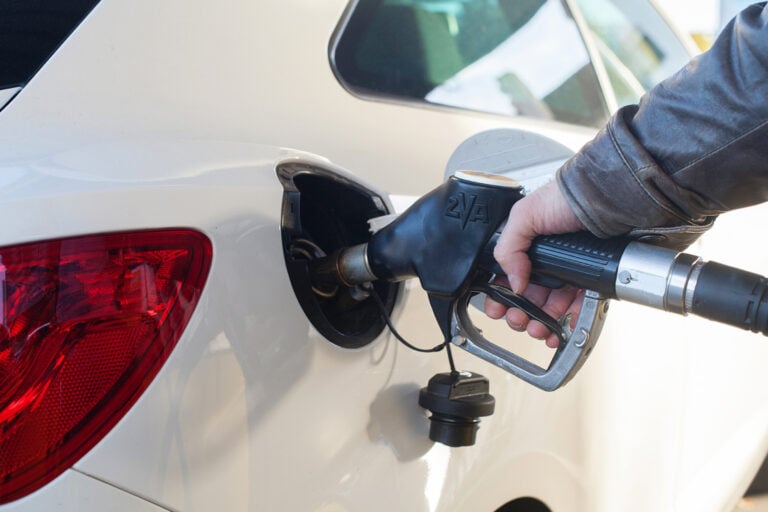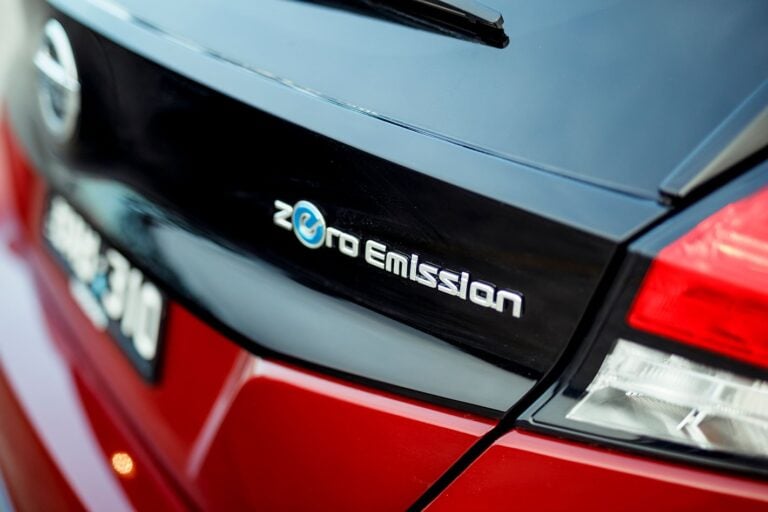
New data has highlighted that strong ‘fuel efficiency standards’ could save Australia up to $13.6 billion by 2035 – boosting EV supply, while cutting fuel bills for new petrol- and diesel-powered vehicles.
Snapshot
- Report predicts billions of fuel, environment, health savings with vehicle emissions mandate
- EV price parity by 2028, lower fuel bills for new petrol and diesel vehicle owners
- Landmark u2018fuel efficiency standardu2019 to be introduced late this year
Ahead of the federal government’s landmark ‘fuel efficiency standards’ policy due later this year, the report by research firm Mandala – commissioned by lobby groups Electric Vehicle Council and Climate Council – projected that full EVs will match the price of internal combustion engine vehicles by 2028.
It predicted the price of EVs will fall by an average of 2.8 per cent each year due to gradually decreasing battery costs, whereas the price of conventional petrol and diesel cars will rise by 1.4 per cent per year.
Electric price parity achieved?
While EVs are generally more expensive to buy than comparable combustion engine vehicles, some Chinese-made electric models have already achieved price parity, such as the BYD Dolphin, Atto 3, MG 4, and Tesla Model 3.
Why? Chinese-made EVs benefit from cheaper labour costs and a local supply chain of vehicle parts, including all-important battery packs. This has resulted in a lower sticker price for buyers than others.

However, it admitted the carbon emissions mandate will contribute to slightly higher prices for the latter, due to the need for automakers to fit costly technologies to reduce emissions, such as hybrid systems.
While it ultimately benefits buyers with decreased fuel consumption and running costs, some carmakers have already warned about discontinuing budget-friendly petrol cars amid forthcoming strict Euro 7 emissions mandates overseas.
Additionally, the report estimates that in 2027, a new EV owner could save nearly $10,000 in ownership expenses (i.e. fuel/charging and maintenance) after 10 years, while a new combustion engine vehicle owner would save up to $800 in the same period.

Australia can save billions in fuel, environmental, health expenses
The report modelled data based on three scenarios, with all assuming 100 per cent new EV uptake in Australia by 2035.
At the time of publication, only the nation’s capital has committed to exclusively sell new EVs from 2035.
u2705 Globally competitive scenario
- Targets catch up to the United States by 2027 and European Union by 2030
- $13.6 billion net savings by 2035 u2013 $9.2 billion for consumersu2019 ownership costs and $4.4 billion for environmental and health costs
- 31 megatonnes of CO2 exhaust emissions avoided by 2035
- EVs need to account for 54% new sales by 2030, 100% by 2035 to meet targets
ud83dude0e Fast follower scenario
- Targets decrease consistently to catch up to the EU by 2030
- $10.3 billion net savings by 2035 u2013 $7.3 billion for consumers and $3 billion for environment and health
- 24 megatonnes of CO2 exhaust emissions avoided by 2035
- EVs need to account for 36% new sales by 2030, 100% by 2035 to meet targets
ud83dudc0c Slow follower scenario
- Matches the rate of target reduction to the US to 2032
- $8.9 billion net savings by 2035 u2013 $6.4 billion for consumers and $2.5 billion for environment and health
- 21 megatonnes of CO2 exhaust emissions avoided by 2035
- EVs need to account for 29% new sales by 2030, 100% by 2035 to meet targets

In context: Australia’s vehicle emissions
Currently, more than 85 per cent of vehicles sold globally are covered by a carbon emissions mandate – which aims to limit harmful locally-produced pollutants.
The report claims new combustion-engined passenger cars in Australia emit up to 1.5 times more carbon dioxide than those in Europe, whereas it’s 1.4 times more for light commercial vehicles.

The forthcoming Australian fuel efficiency standard will mandate a cap on the average carbon exhaust emissions of all vehicles a carmaker sells each year.
It will theoretically boost the supply of EVs to Australia and increase competition to drive down prices, while lowering the emissions footprint and fuel consumption of petrol- and diesel-engined vehicles.
But, the Climate Council has also urged for the policy to not have any loopholes or concessions, such as allowing high-emitting carmakers to purchase carbon credits – a strong revenue source for Tesla, one of the world’s largest EV makers.
More EV stories to help you choose the best car for your needs
- ? EV news, reviews, advice & guides
- ❓ Short & sweet: Your EV questions answered
- ⚡ New EVs: Everything coming to Australia
- ? Australia’s EVs with the longest driving range
- ⚖️ Best-value EVs by driving range
- ? How much do EVs cost in Australia?
- ? How much more expensive are EVs?
- ⚖️ Number crunching: Is it time to switch to an EV?
- ♻ Should you buy a used EV?
- ?️ Are EVs more expensive to insure?
- ? Costs compared: Charging an EV vs fueling a car
- ? EV charging guide
- ? Are there enough EV chargers in Oz?
- ?? EV servicing explained
- ? EV battery types explained
- ? When do EV batteries need replacing?
- ? Hydrogen v EVs: What’s best for Oz?
- ? How sustainable are EVs, really?
MORE advice stories to help you with buying and owning a car
We recommend
-
 News
NewsAustralia commits to fuel efficiency standards: Details & industry response
The government’s latest consultation paper confirms a new vehicle carbon emissions mandate will be legislated, but time’s still needed
-
 News
NewsWhat electric car incentives are on offer in Australia?
With more EVs being introduced into the market, what are governments offering to increase uptake among private buyers?
-
 News
NewsWhat does Euro 7 mean for petrol and diesel cars?
With Hyundai putting a cloud over the future of petrol-only high performance N models primarily due to Euro 7, we explain what it means for the car industry




